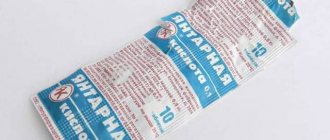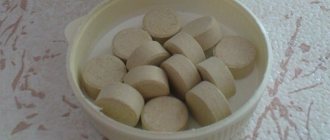Many people daily encounter products obtained as a result of the vital activity of yeast - bread, wine, beer. Everyone knows about the benefits, but few have thought about the dangers of yeast. Doctors and scientists have proven that these microscopic organisms are capable of working not only for the benefit of humans. So what is more – benefit or harm? Should people consume yeast?
Yeast harm and contraindications
Recently, the benefits of baker's yeast for humans have been questioned.
This product is under the close attention of nutritionists and gastroenterologists, who are confident that it is extremely harmful. First of all, due to the fact that it does not lose its qualities after baking, it remains in an active state and, probably, becomes the cause of all kinds of diseases. There is some truth in this, but not one hundred percent. Thermotolerant yeast can withstand temperatures up to 60 oC. But in the oven during baking, it usually rises from 120 and above, and inside the crumb it is 95 oC. In such conditions, unicellular organisms do not survive: accordingly, they do no harm. Their presence is possible only in unbaked crumb. And then indeed, yeast can cause harm to a person.
https://www.youtube.com/watch?v=flashframe.li.rushowflash.html
This species is genetically modified and does not occur in nature: it is not natural (not wild) yeast. That's why they can withstand higher temperatures. Such single-celled organisms are relatives of those species that contribute to the development of oncology and harm health. And in excess quantities, genetically modified yeast causes a negative effect (recall) in our body.
The process of fermentation is truly inherent in human nature and has a beneficial effect on it. But today its quantity significantly exceeds natural need, which is harmful to humans. Every day we eat bread, drink beer and wine made with yeast. Excessive fermentation activity interferes with self-regeneration and restoration of the physical system. At the cellular level, this excess only causes harm to health.
Attention! You should not eat poorly baked bread, as it contains an active fungal infection. If it enters the human body, it can cause serious harm to health.
Previously, in the kitchen and bakery they used only sourdough in pressed form. It quickly deteriorated and lost its beneficial properties due to the high water content in the composition. Subsequently, in order to extend the shelf life, they began to dry it. The active state of Saccharomycetes passed into a dormant form, and the result was a product that, in sealed packaging, could not lose its beneficial properties for up to two years.
An additional advantage of dry yeast is that it does not introduce extraneous odors into baked goods. They are much easier to handle than pressed ones, so any housewife can do it. In addition, dry yeast granules contain a protective layer that contains glutathione. This substance exhibits beneficial properties when using flour with strong gluten, as it partially neutralizes it.
Yeast is prescribed as a useful remedy for many diseases. These are various infections, furunculosis, diabetes mellitus, skin diseases, gastrointestinal pathologies. In all these cases, the amount of the drug must be determined by the attending physician. For example, with low acidity, it is recommended to drink 100 ml of beer starter half an hour before meals for a month.
For preventive purposes, to enhance protein and vitamin nutrition, the following amount of yeast per day is recommended:
- dry – up to 25 g;
- pressed – up to 100 g;
- yeast paste – up to 50 g;
- drinking - up to 500 g.
The benefits of drinking yeast were widely known during the war. With their help they saved Soviet people from hunger and disease and helped them survive. Yeast was made from wheat or rye flour: it was a highly nutritious and palatable drink.
Symptoms of yeast intolerance: belching, a feeling of heaviness in the epigastric region, bloating, and sometimes diarrhea. To avoid this, you must first strengthen the digestive tract with the beneficial properties of vegetable juices, and then drink a little beer starter on an empty stomach in the morning. After this, you should eat only when you feel hungry. If these conditions are not met, intolerance to the product occurs.
Contraindications for taking yeast: kidney disease, gout, some other cases. If the kidneys are normal, then the yeast, on the contrary, has beneficial properties and supports them. Beer starter also causes the release of estrogen in the human body. In both women and men, large amounts of estrogen can cause negative biochemical reactions.
Why do many strong, vigorous and healthy people prefer to do without bread? Why don't healthy people and long-livers eat bread? “A sick person is a slowly dying person. And the slower he dies, the more we will earn from him.” (Baking industry)
Scientists conducted a study and found that within 15 minutes after a person eats 100 grams of refined carbohydrates (bread, chips, sugar, white rice, cookies, etc.), the function of the human immune system weakens by more than 90% . A study published in the Journal of Cancer found a link between white bread consumption and an increased risk of cancer.
The study found that people who eat mostly white bread (up to 5 slices per day) have twice the risk of kidney cancer than those who eat little white bread (no more than 1.5 slices per day). .
At one of the congresses on vegetarian nutrition in Tallinn in 1990, a report was made that talked about bread. The speaker argued that bread is a deadly product for human health. Swelling from intestinal juices, it acidifies the internal environment of the body, turning into lumps of clay, sticking to the walls of the intestines and creating obstruction.
How is bread prepared? Baking bread in the oven occurs at a temperature of about 300 ° C or in a frying pan, where the heating reaches 250 ° C. But carbohydrates and all other components of food processed at temperatures above 100 ° C are substances that are no different from the contents dead cell!
When eating bread, a person eats a dead mixture of dead cells. This explains why it is very easy to choke on baked goods, it is difficult to eat them dry, without resorting to mixing them with harmful fats and liquids, which is extremely harmful for digestion. Moreover, bread does not contain enzymes, life energy, but on the contrary - it absorbs it to try digestion of dead cells that settle in the body in the form of toxins and poisons. Therefore, bread lovers feel tired, lazy, drowsy, and have mucous discharge in the morning.
Yogis claim that industrial bread, among other things, often contains too much salt. Most buns, rolls, and horns contain a lot of sugar, milk, and the recipe often includes eggs. Such bread acidifies the body much more than usual, can cause fermentation in the stomach and intestines, and contributes to constipation. And yeast fungi, which are part of yeast dough, are the strongest allergens.
When baking bread, yeast fungi die, but their components remain in it and cause allergic reactions in quite a lot of people, in particular, stuffy nose, swelling, rheumatism and increased frequency of attacks of bronchial asthma. It should be noted that the composition of purchased bread, in addition to yeast, necessarily includes sweeteners, extremely allergenic and harmful to everyone, margarines and light oils, which are responsible for the formation of cancer and atherosclerosis.
Well-known supporters of a healthy lifestyle - scientist Katsudzo Nishi, Paul Breg, Herbert Shelton and the outstanding doctor Galina Shatalova have repeatedly argued that bread is not only not healthy, but also harmful food, which is poorly absorbed by the body and causes disturbances in the functioning of the gastrointestinal tract, because of which various diseases arise.
Healers Maya Gogulan and Galina Shatalova write about the need to completely avoid yeast bread in the treatment of many diseases. They call bread a “deadly” food and believe that it contributes to the development of cancer of the gastrointestinal tract.
Let us give quotes from the experience of people who cleansed the body of poisons, which gives them the right to give the most objective assessment of the consequences of eating bread. Doctor Galina Shatalova writes in the book “Healing Nutrition”: In January 1991, I asked the doctors to check my condition before climbing the Big Col, and after returning.
All physiological parameters—primarily breathing and pulse—turned out to be normal. After that I started eating bread, and did this for three months. Arriving again in Kislovodsk, she asked the doctors to record the results of the experiment. But even before their conclusion, it became clear to me that the consumption of bread was not in vain. Climbing the Big Col, I felt short of air and discomfort.
Antioxidant Benefits of Yeast
The oxygen we inhale every day oxidizes the cells of our body. Oxidative reactions are enhanced by stress or pollution and lead to oxidative stress situations. In order to prevent damage to DNA or proteins, antioxidants act as a neutralizer against oxidizing factors and restore balance.
Selenium is recognized as one of the strongest antioxidants, which ideally copes with regulating oxidation in the body. It reduces the risk of cancer and is used for colon, prostate, lung cancer, and is used for other types of cancer. Selenium helps improve the condition of the thyroid gland and treats iodine deficiency diseases.
Unfortunately, up to 80% of the population is deficient in selenium. You can replenish it by consuming yeast enriched with selenium, the particular benefit of which is the bioavailable form of this antioxidant.
The creation and functioning of cells in the human body is impossible without yeast. In some cases, they are prescribed even for diseases of the hematopoietic system, including anemia.
What is yeast and what are they?
These are single-celled chlorophyll-free microorganisms of plant origin that trigger the processes of fermentation or oxidation of organic compounds, primarily carbohydrates. A person consumes several useful types of yeast with food:
- wine: found on fruits and berries;
- beer: contained in malt, hops;
- dairy: in lactic acid products;
- baking: found on various types of cereals.
The uniqueness and beneficial properties of yeast are that they can live in the absence of air and obtain energy from the processes of fermentation and the release of alcohols. Due to the passage of air through the food substrate, they consume oxygen and release carbon dioxide. However, if a large amount of glucose is present in the medium, the fermentation process begins even without air access.
Attention! Fermentation is a natural process that is located not only outside the human body, but also inside it.
What it is
Bakery, beer, wine, dairy - these are the 4 most common types of yeast that are used in cooking. The former, as you might guess, are used in baking, beer – in the production of intoxicating drinks, dairy are included in kefir, and the light coating on grapes is one of the varieties of wine.
The diluted yeast is used within the next 24 hours . Packaged stores for about 2 weeks .
When independently determining quality, a careful inspection is carried out. The fresh product has a creamy, delicate color, crumbles easily, but does not smudge.
Chemical composition and calorie content of yeast
Since yeast is a single-celled fungus, we can say that it consists of approximately 65% proteins, 10% amino acids, the rest is water, vitamins, micro- and macroelements. Yeast cells also contain other beneficial substances:
- polysaccharide;
- nucleic acids;
- glycogen;
- purine and pyrimidine bases;
- phosphorus compound volutin (complex of ribonucleic acid and polyphosphates);
- B vitamins, D;
- palmitic (75%) and stearic (25%) acids.
The calorie content of yeast is about 75 kcal/100 g of product.
Beneficial properties of brewer's yeast
Brewer's yeast is one of the most effective dietary supplements, containing:
- 14 vitamins: group B (ensure the normal functioning of the central and peripheral nervous system, prevent the occurrence of Parkinson’s disease, accelerate cell regeneration, improve vision, slow down the aging process), as well as C, D, E, F, PP;
- 17 amino acids, most of which are essential;
- unsaturated fatty acids (arachidonic, oleic and linoleic);
- potassium, chromium, calcium, selenium, phosphorus, zinc, iron, sodium, sulfur, copper and other trace elements.
- All vitamins contained in brewer's yeast are water-soluble and therefore do not accumulate in the body. This supplement significantly improves well-being in case of vitamin deficiency and hypovitaminosis. Dietary supplements based on brewer's yeast are useful for vegetarians to take periodically: such preparations contain folic acid, the source of which for the body is mainly meat food. Folic acid is involved in the process of DNA synthesis during cell division and has a beneficial effect on reproductive function.
We recommend reading: Is it possible to eat salted lard while breastfeeding?
The benefits of brewer's yeast are as follows:
- improve appetite, normalize digestion and metabolism;
- help achieve optimal weight. If you are overweight, you can lose a few extra pounds by accelerating metabolic processes. People who are underweight take yeast, on the contrary, they gain weight. This effect is often used by athletes who want to build muscle mass;
- due to the high chromium content, they alleviate the condition of patients with type II diabetes;
- The antioxidants contained in yeast slow down the aging process;
- prevent the occurrence and development of liver cancer;
- calms down during stress, emotional exhaustion, sudden mood swings;
- restore strength in case of physical exhaustion, anemia, strengthen the immune system;
- help withstand significant physical and mental stress;
- normalize the functioning of the cardiovascular system;
- maintain an optimal level of acid-base balance in the body;
- help get rid of acne, rashes, improve skin condition with furunculosis, dermatosis, eczema, psoriasis;
- strengthen hair and stop hair loss;
- strengthen nails and make them less brittle.
Pathogenic yeast
Certain types of yeast cause dangerous diseases in people with weakened immune systems. For example, Candida mushrooms are one of the components of normal microflora. But as soon as a person’s immunity decreases as a result of injury, surgical treatment or long-term use of antibiotics, yeast has a negative effect on the body. Fungi begin to develop rapidly, causing candidiasis, which can be quite dangerous.
No less severe is the harm of yeast to the human body in cases of cryptococcosis, folliculitis and seborrheic dermatitis. In a healthy body, these fungi may not manifest themselves in any way.
Reviews
Most reviews about brewer's yeast are positive, since this dietary supplement is safe and really has a beneficial effect on the human body, it is completely beneficial. This is confirmed by reviews from people taking the beer drug.
Oksana
The beer complex helped me bring my body back to normal - I had suffered from lack of weight since childhood, but after completing 3 courses of treatment, my problem became a thing of the past.
Ivan
At the age of 40, I began to lose my virility; I didn’t want to take serious pills, so I went to the doctor. He recommended brewer's yeast tablets to me - now I feel like a full-fledged man again!
Irina
After giving birth, I noticed that my hair looked terrible and my nails were peeling. The vitamin complexes I took did not help, so after finishing breastfeeding I tried brewer's yeast. The beer dietary supplement had the expected effect very quickly and now I am happy with my appearance.
Why is modern bread harmful to humans?
The beneficial properties of baker's and brewer's yeast have been used by people in medicine since time immemorial. They contain a lot of value for the body: proteins with essential amino acids, carbohydrates and a whole range of enzymes and minerals. That is why this product, which is quite affordable compared to dietary supplements, is suitable for correcting metabolic disorders, problems with the immune system, the effects of stress, as well as hypovitaminosis.
The benefit of wine yeast for humans lies in its resistance to alcohol, fermentation of grape marc, and transformation of it into high-quality wine. In addition, their beneficial properties are revealed in improving blood circulation, strengthening the vascular network, and preventing cardiovascular diseases. Scientists have discovered the relationship between yeast and gastrointestinal microflora, in particular, a beneficial effect on the inflamed intestines.
In addition to the fact that yeast carries micronutrients, it also allows the synthesis of essential vitamins (B-group, C) inside the human body, and also strengthens the immune system by being a catalyst for the most important biochemical processes. Single-celled organisms lower blood sugar and provide many beneficial substances, including selenium, which has strong anti-cancer activity.
Attention! Scientists have discovered another beneficial property of yeast: taking it during times of nervous overload and stress improves the ability to concentrate. So those who are preparing for exams or competitions should also take the leap.
Unlike baker's yeast, this type of microorganism is not dangerous to human health. They contain many useful enzymes that have a positive effect on the condition of the intestinal tract, and with frequent and regular use they strengthen the immune system and have a beneficial effect on the entire physical system.
Important! Long-livers of the Caucasus regularly consume healthy lactic acid drinks in large quantities.
The effect of yeast on the human body is ambiguous. Their supporters say that mushrooms are good for the body because they are a source of essential vitamins. At the same time, opponents of yeast argue that the incoming vitamins are consumed by these same mushrooms. As a result, the body does not receive any benefit, and the number of fungi in the body increases sharply.
The harm of baker's yeast to the body is as follows:
- disrupt the intestinal microflora and trigger putrefactive processes inside the intestines. As a result, all beneficial bacteria die, immunity decreases, and dysbacteriosis appears;
- the acid-base balance in the body is disturbed. As a result of the formation of an acidic environment, constipation, gastritis and ulcers occur;
- in the presence of fungal flora, the composition of the blood changes and the amount of calcium in the body sharply decreases;
- as a result of the production of artificial yeast, heavy metals and harmful chemical compounds enter it;
- Normal blood circulation is disrupted, blood clots form;
- lead to the formation of malignant tumors in various human organs and systems.
Bakery mushrooms also have another name – thermophilic yeast. The harm to the body of these fungi in bread is a matter of dispute among scientists and bakers. The latter agree that yeast can be harmful to the body when consumed fresh. But when baking bread, the temperature inside the crumb reaches 98 degrees.
There is the following difference between these two types of yeast:
- Brewer's yeast is not used in baking because it dies at high temperatures.
- The technology for growing these mushrooms is completely different.
- Brewer's yeast is recommended for use in the treatment of a number of diseases.
There are several types of sourdough: hop-based sourdough, rye sourdough made from rye flour and others. The recipe for making a healthy hop starter is as follows:
- Boil 2 cups of water in a saucepan.
- Pour 1 cup of dry hops into the water, bring to a boil and cook for 15 minutes over low heat.
- Remove from heat, cool to room temperature, and pour into a clean glass jar. After this, add a tablespoon of sugar and half a glass of whole grain flour to the broth.
- Place the jar in a warm place for 24 hours. During this time, the starter should double in volume.
You need to store the starter in the refrigerator, refreshing it periodically.
To prepare yeast-free bread at home, you must follow the following recipe:
- Prepare a dough from fresh, renewed starter (2 tablespoons), a glass of water, a teaspoon of salt, a tablespoon of sugar and a glass of flour. You can take wheat flour (100%) or rye and wheat flour (50 to 50%)
- Place the dough in a warm place for several hours (from 2 to 10).
- As soon as the dough rises, add another 1-2 cups of flour to it. The exact quantity will depend on the quality of the flour.
- Place the dough in a baking dish greased with vegetable oil. Place the mold in a warm place (possibly near a radiator) for 6-12 hours. During this time, the volume of the dough should increase by 1.5-2 times.
- Bake the bread in an oven heated to maximum temperature for 10 minutes. After this, the heating is turned off, and the bread is left in a warm oven until ready.
By consuming this bread, you will stop worrying about what harm baker's yeast can cause to the body. Yeast-free bread baked with hop sourdough contains all the essential amino acids, carbohydrates, fiber, B vitamins, minerals and trace elements. Such baked goods do not go stale for a very long time, since hops contain a large amount of essential oils, which are powerful phytoncides with antimicrobial properties.
“Why no bread?! Come on, a piece of bread in your left hand, a spoon in your right!” What can you do, custom! Salad with bread, soup with bread, porridge with a sandwich and, finally, compote with a bun or cookies. But dad doesn’t realize that he’s not only harming himself. What is there! Loose faces and bodies so reminiscent of store-bought bread have already become the norm.
So, he drills this program into his child, who, having grown into an ordinary person, will pass it on to his children. But the belief that bread is a “source of strength” and “the head of everything” spread thanks to advertising relatively recently (over the course of just a few centuries). Before this, people ate nuts for thousands of years.
How true is the expression “Bread is the Gift of God”? Think about it, did bread exist in nature in its original form? Does it grow on trees? No. Bread is clearly a creation of human hands. Naturopaths (proponents of a healthy lifestyle and raw plant-based diet) say: You can read about what a person needs to eat in the Bible in the first chapter of the Old Testament. “And God said, I have given you every herb that yields seed, and every tree that has fruit that yields seed; it shall be for you to eat” (Genesis: 1:29).
“God invented food, but the devil invented cooking and baking!” say naturopaths. This means that bread cannot be called an invention of God. Anyone who forces a child to eat or tells him “Eat with bread” is wrong. The innate instincts of children are more correct than the “civilized” habits of adults. Nature is wise, and we must learn from it.
Nature gives man nuts as bread. From Latin, walnut, for example, is translated as royal acorn. There is another name - “food of the gods”. The walnut is a miracle created by nature, which, in its totality of beneficial properties, has no equal in the plant world. “Tree of Life” - this is how people often call the walnut, since since ancient times it has fed, restored strength and healed people.
In ancient Babylon, priests forbade mere mortals to eat walnuts so that the mob would not surpass the greats of this world in mental abilities. I. V. Michurin called nuts “the bread of the future.” Indeed, in terms of the content of valuable nutrients, it occupies one of the first places among fruits. The energy value of nut kernels is many times higher than that of wheat bread.
Since ancient times, nuts have been recommended for nursing mothers and the sick. It was not bread that was considered a source of strength, but nuts. No wonder in Rus' they were called the food of heroes. Even in Sparta it was known that nuts were necessary for a young, growing male body. It is known that nut milk was widely introduced to the menu of growing infants of Sparta.
And here is what doctor Galina Shatalova writes in the book “Healing Nutrition”: “What, it would seem, is common between the Abkhazians and the Yakuts? Some live in the Caucasus, others in frozen Yakutia. True, representatives of both nations are distinguished by enviable longevity. Anyone who has at least once attended the performances of a dance ensemble of 100-year-old Abkhazians will not forget the stunning impression that these energetic, graceful people leave.
“Bread is a deadly food,” Emmitt Densmore declared many years ago. And the outstanding physician hygienist G. Shelton called bread “one of the great curses of modern life,” because the desire for temporary enjoyment of a crust of bread brings us closer to death unnoticed... “Yeast bread is especially harmful. Galina Sergeevna considers it the most harmful mass product, responsible for the degradation of human health. According to my feelings, I agree with her.” (N.I. Kurdyumov “DO WE WANT HEALTH?..”)
- Suppression of healthy intestinal microflora, weakened immunity, the occurrence of cancerous tumors. Scientists have conducted a series of experiments that have confirmed that malignant tumors placed in a yeast base begin to grow exponentially and completely disappear when removed from the yeast medium. The killing ability of yeast has been discovered relatively recently. Yeast cells kill sensitive, less protected cells of the body by secreting poisonous proteins of small molecular weight into them. The toxic protein acts on plasma membranes, increasing their permeability to pathogenic microorganisms and viruses. Yeast first enters the cells of the digestive tract, and then into the bloodstream. Thus, they become the “Trojan horse” with the help of which the enemy enters our body and helps undermine its health. Once in the body, they begin their destructive activities. Finding themselves in our digestive tract, and then entering the bloodstream, they destroy cell membranes, promoting cancer,” disrupting the functioning of all digestive organs: stomach, pancreas, gall bladder, liver, intestines.
- Hypovitaminosis. Refined white flour and all products made from it completely lack the B complex of vitamins and vitamin E. Signs of a lack of vitamins in this group are fatigue, drowsiness, irritability, joint pain, and disorders of the cardiovascular system. Healthy microflora produces vitamin B12. But when eating baked goods, the microflora is so weakened that the production of B vitamins becomes simply impossible. This is one of the reasons why vegetarians, confectionery and bakery lovers, suffer from anemia.
- The risk of diabetes increases. Researchers from Simons College of Medicine, a division of the Harvard University School of Public Health, reported: “People who eat a typical Western diet—meat, baked goods, white bread, and other unhealthy foods—are known to be more likely to develop diabetes.” the average is about 50%.”
- Acidosis. Bread is a dry product, it affects the body and contributes to the development of a serious disease - acidosis (acid-base imbalance). As a result, fatigue and irritability increase, rapid physical and mental fatigue, nausea, bitterness in the mouth, gray coating on the tongue, gastritis, black circles under the eyes, muscle pain from excess acid, and loss of muscle elasticity appear. The body fights acidosis, spending a lot of energy to restore the acid-base balance at its own expense, intensively wasting the most important alkaline reserve: calcium, magnesium, iron, potassium, sodium. The removal of alkaline mineral elements from the bones of the skeleton inevitably leads to their painful fragility, which is one of the main causes of osteoporosis at any age.
When taking them you need to know when to stop
David Matevosov, head of the department of gastroenterology and hepatology of the Yauza Clinical Hospital, member of the Russian and European Associations for the Study of the Liver; Ph.D.:
“What does modern medicine have to say about nutritional yeast? First: their moderate consumption in combination with lecithin can lower cholesterol levels and relieve pain from neuritis. Second: no matter what Internet experts claim, today there is no scientifically proven evidence that yeast causes or provokes the formation of tumor cells in humans.
Third: the medicinal qualities of yeast fungi are actively used in medical practice. For example, one of the leading probiotic drugs for treating intestinal microflora, Saccharomyces boulardii, is one of our heroes. This type of yeast in combination with anti-Helicobacter therapy together with an antibiotic increases the effectiveness of treatment of gastritis. Excessive yeast content in foods leads to suppression of beneficial intestinal microflora
, predisposing a person to excessive gas formation, colic, and bowel dysfunction. Therefore, the main recommendation when using yeast and products containing it is moderation. Then the living bacterial component will be beneficial and will not turn into an aggressor.”
FACT: Yeast from the genus Candida, which is part of a healthy human microflora, can become pathogenic. This happens when they develop massively against the background of a weakened immune system, taking antibiotics, or undergoing surgical intervention in the body.
Is brewer's yeast harmful to the body?
How does yeast affect the body?
- fermentation, accompanied by putrefaction, is a favorable environment for harmful microorganisms that penetrate into the blood through damaged intestinal walls;
- the process of removing toxins from the body is disrupted;
- intoxication of the body with waste products of bacteria continues;
- the protective and digestive functions of the intestines decrease;
- constipation occurs, sand clots form in the kidneys, stones in the gall bladder and liver.
The harm of yeast to the body is obvious. But how much benefit do these single-celled fungi bring to the body?
The thing is that when yeast enters the body, in the process of active reproduction, it begins to consume, along with carbohydrates, all those beneficial vitamins and minerals that come with food. This means that a person does not receive enough of them, which subsequently leads to their deficiency and depletion of the body. When assessing whether yeast is harmful to the body, you should take into account its type (baker's, wine, dairy, beer). Among all varieties, the most harmful to the body are baking or thermophilic.
Brewer's yeast is a fungus that grows and reproduces from barley hops and malt. They are an indispensable part of the brewing process. There are top and bottom brewer's yeasts.
The effect on the body of this type of mushroom, according to scientists, is medicinal. This is explained by the fact that brewer’s yeast contains almost the entire set of amino acids known to science, all B vitamins, a large amount of protein, fatty acids, and carbohydrates. Thanks to this, brewer's yeast has long been used as a dietary supplement to boost immunity, improve performance and well-being.
Brewer's yeast has only a positive effect on the functioning of the gastrointestinal tract and, unlike baker's yeast, does not cause harm.
For those who have realized all the harm yeast can do to the body, it would be logical to switch from eating traditional bread to yeast-free bread. Today, all major supermarkets with their own bakeries offer it, and it is quite in demand. More and more types of such bread appear every day.
Some time after giving up yeast bread, a person notices how intestinal function normalizes, waste and toxins are gradually eliminated from the body, and health improves. Yeast in the human body, not receiving external nutrition, dies and gradually begins to be eliminated. Probiotics also contribute to the rapid restoration of intestinal microflora.
“The reaction to any bread and to boiled potatoes turned out to be almost the same - a dull pain in the head and a specific “fog.” The reaction to prolonged consumption of boiled potatoes is practically no different from the reaction to bread. The same reaction, but much weaker, to boiled rice, millet, barley and other grain products.
This “bread and potato” reaction develops like this: first, the mood noticeably deteriorates (depression appears), then a “fog” appears in the head, a dull pain, then drowsiness and apathy are added. After one or two days, cold symptoms appear (sneezing, runny nose) or a little later one of the inflammatory diseases flares up.
Bread. What it was like Previously, natural malt and hop yeast were used to bake bread at home. They are active only at a temperature of 20-25 ºС, dying at 37 ºС. The bread that was previously made in Rus' could be called healthy. But this word cannot be said about today's bread. But why?
Due to eating baked goods, most people suffer from a lack of iron, zinc, potassium, silicon, magnesium, vitamins B1, C and E, which is the main reason for a shortened life span, as well as physical and mental fatigue. There is a catastrophic lack of silicon and magnesium in the human diet. Silicon (Si), an element of life, is found in the skins of natural foods.
Vitamin B1 - relieves fatigue, insomnia, muscle spasms, neuralgia, strengthens memory, promotes the development of mental abilities, regulates metabolism. Vitamin C strengthens the immune system and is involved in the production of anti-stress hormones. Vitamin E - slows down cell aging, increases endurance, reduces fatigue, heals burns, lowers blood pressure, improves blood circulation. Wheat bran contains 5 times more iron than wheat flour. And 200 g of bean sprouts contains the daily requirement of vitamin C.
Weaning off bread can seem like a daunting task. For, as popular wisdom says: “A habit arises like a light web, and then binds like an iron wire.” But habit can be cheated. How?
First, instead of more harmful white bread, you can buy less harmful one - made from whole grains, from wholemeal flour (rye, bran, yeast-free bread). At least they contain B vitamins and fiber. A couple of slices of bread won't kill you. But still try to eat less of it. Then you can replace the bread with whole grains or other products that taste like bread, because any habit is based only on taste.
Instead of bread, you can accustom yourself to buckwheat or wheat, which help build muscle mass. “Buckwheat porridge is our mother!” - they said in the old days in Rus'. Buckwheat and wheat are very nutritious. Although there is a third option - replace the bread with legumes (mung beans, lentils, chickpeas).
Legumes are the best source of protein and healthy fat. It’s not for nothing that they say about ancient times that it was “under King Pea and Queen Lentil.” Remember that to wean yourself off bread, a new food product should be introduced into your diet gradually. The body itself will feel that cereals and legumes are tens of times healthier than bread, and you will notice how the desire to buy unhealthy baked goods will disappear by itself without any special effort on your part. The main thing is to start getting used to the useful product. “The beginning is half of everything,” said Pythagoras. Be healthy and wise.
Views 1,756
Does a person need yeast?
According to official data from traditional medicine, the benefits of yeast for our body are great. They are considered to be a universal biologically active food additive. They contain about 66% proteins, various acids, vitamins, and microelements, which are undoubtedly beneficial for humans.
Yeast is recommended for use for the following problems:
- gastritis and stomach ulcers;
- colitis;
- weak immunity;
- anemia;
- elevated cholesterol levels;
- yeast is also good for the skin.
Despite the fact that the yeast product has a beneficial effect on the functioning of the gastrointestinal tract, doctors still do not recommend its use under certain circumstances. For example, dry ones should not be consumed in case of dysbacteriosis and other acute diseases.
Speaking about the value of yeast, we should also add that it can be useful for vegetarians. The yeast product perfectly compensates for the lack of protein and vitamin B in the human body.
Features of nutritional yeast
The benefits and harms of nutritional yeast are well known to adherents of a healthy diet. This product has gained popularity among raw foodists and vegetarians, as it is fully saturated with beneficial nutrients. They can be found on sale in the form of flakes, powder, and tablets. Nutritional yeast has a cheesy taste, which is why it is often added to casseroles, omelettes, and other dishes. They have beneficial effects on health:
- remove cholesterol;
- help with constipation;
- improve intestinal microflora;
- stabilize blood pressure;
- prevent pancreatic cancer.
The drug can cause harm only in case of an allergic reaction or individual intolerance.
The gastrointestinal tract cannot live without yeast
About 100,000 billion bacteria of several hundred species are involved in human digestion, and human health directly depends on the stability of this intestinal microflora. As strange as it may sound, baker's probiotic yeast Saccharomyces cerevisiae var. boulardii help maintain the delicate balance of microflora and intestinal health.
Yeast is considered a natural dietary supplement designed to stimulate the production of secretions in the stomach and improve intestinal function, ensuring proper functioning of the digestive tract in case of ulcers, gastritis, colitis, and other diseases of the digestive system.
Traditional healers use dry yeast to relieve symptoms of enterocolitis and colitis - add a teaspoon of yeast to 200 ml of fresh carrot juice and give the patient this mixture to drink after 20 minutes.
Yeast for weight loss
Yeast starter can benefit those who want to lose weight. As you know, one of the causes of obesity is a violation of metabolic processes in the body. Yeast helps eliminate this problem, but physical activity and a balanced diet are also necessary to obtain beneficial results.
It is necessary to strictly follow the dosage regimen indicated on the package, and also not to get carried away with the drug in pursuit of a slim figure, otherwise the benefit can easily turn into harm. They are consumed in small portions and high-calorie foods are excluded from the diet.
Where are they kept?
The use of a beer complex with additives in the form of microelements, vitamins or other useful things or without additives produced in dosage form is not always suitable, so nutritional yeast is often taken in its natural form.
What foods contain brewer's yeast? Of course, they are in beer. But in order for its intake to be beneficial and not lead to alcoholism or the growth of a “beer belly,” you should drink the drink:
- In small quantities;
- Exceptionally natural, “alive”.
The use of yeast in home cosmetology
Knowledge about the health benefits and harms of yeast is used by people not only in nutrition or medicine, but also in cosmetology: both at home and on an industrial scale. Single-celled organisms contain especially many useful beauty vitamins responsible for the condition of the skin. Ascorbic acid is necessary for the construction of collagen, which provides the skin with elasticity and firmness. The beneficial properties of nicotinic acid - vitamin PP - lie in the regulation of tissue respiration and a beneficial effect on hematopoiesis.
Riboflavin, also known as vitamin B2, takes an active part in the formation of hemoglobin. Vitamin B12 ensures the maturation of red blood cells, erythrocytes, which contain hemoglobin. With a lack of beneficial properties of these two vitamins, the skin becomes pale and begins to peel. And together they take care of ensuring a beautiful complexion and a healthy, blooming appearance.
For facial skin
Yeast masks are easy to prepare and do not require expensive additives, yet they have an abundance of beneficial properties. Several recipes useful for different skin types:
- Normal. Grind 30 g of yeast with 2 tablespoons of boiled milk. Apply to your face, don’t forget your neck. After 15 minutes, rinse off;
- Dry. Take 20 g of yeast, a teaspoon of honey, a tablespoon of wheat flour. Grind, adding warm boiled milk to the desired thickness. The procedure time is 20 minutes. Rinse off with warm water;
- Oily, porous. Dilute 20 g of yeast with a small amount of kefir with a minimum percentage of fat content - so that the result is the consistency of thick sour cream. Let it dry on the skin, then rinse off.
If suddenly the benefits of a yeast face mask seem doubtful, or cause burning or itching, it should be washed off immediately and soothe irritated skin with lotions made from chamomile or sage infusion.
For hair beauty
The benefits of yeast for hair are well known. They are used to make various cosmetics and detergents, including at home. To prepare masks, you can take both live and dry substrate. First, dissolve in a warm liquid medium (water, milk, kefir, herbal infusion), let it ferment for at least half an hour or an hour.
For example, for dry hair, a yeast mask with kefir is used, the beneficial properties of which are unique in getting rid of dandruff, moisturizing, nourishing and accelerating growth. To do this, you need to heat a cup of lactic acid drink, add a tablespoon of dry yeast. Place in a warm place, after an hour apply to hair and scalp. Leave for half an hour and rinse by rinsing your hair with water and vinegar.
How to cook properly
There are three categories of baker's yeast: pressed, active dry and fast-acting.
The method of preparation depends on their type:
- Pressed. Yeast is poured with water at a temperature of approximately 35–38 degrees in a ratio of 1/3 and left until bubbles appear.
- Active. For one part of the powder, take 3 times more water and leave for 15 minutes.
- Dry fast-acting. No pre-soaking is required for preparation. They are immediately mixed with flour and used in the dough. It is better to use when you plan to bake pizza.
Overdose symptoms and first aid
In the general medical classification, an overdose of brewer's yeast is not specific, since the product is classified as a food additive and is not used as a medicine. However, taking into account the complex composition of the substrate, as well as the characteristics of its organic structure, a person who consumes dietary supplements in too large quantities may experience various unpleasant symptoms.
The most typical negative manifestations include:
- Systemic allergic reactions. At sufficiently high dosages of the product, patients experience both local rashes, itching and other skin problems, as well as systemic allergies throughout the body, including those affecting internal organs,
- Severe dyspeptic disorders. First of all, these are nausea, vomiting, flatulence, bloating, pain in the epigastric region, constipation or diarrhea,
- Hypervitaminosis. If you take extremely high doses of dietary supplements, an excess of vitamins, microelements and beneficial acids can theoretically form. It is problematic to achieve such an effect one-time (you need to take more than several hundred tablets orally, and this is quite difficult), but over a long period of time (for example, 1 or 2 months) it is quite possible.
What to do in case of overdose? As clinical practice shows, there is no specific therapy in this case. Possible actions at the prehospital stage include gastric lavage and inducing artificial vomiting, taking adsorbents, and inducing bowel movements by using a laxative.
In the case of severe forms of overdose (they are very rare), the victim is admitted to a hospital, where he receives detoxification, supportive, symptomatic, protective therapy within the framework of standard medical care protocols.
The effectiveness of such nutrition for weight loss
Many people think that consuming yeast contributes to weight gain. Some people specifically introduce brewer's yeast into their diet, following the recommendations of friends or a doctor, in order to gain a few kilograms of weight. However, it is not always possible to achieve the desired effect. Sometimes the course of taking brewer's yeast comes to an end, but the person's weight remains the same.
In addition, everyone knows that it is very easy to gain extra pounds if you overuse baked goods, which are mainly prepared using yeast. It would be logical to assume that eating without this component will contribute to weight loss. And if you remove all yeast products from your diet, you can easily achieve grace and harmony. Is it so?
In fact, a yeast-free diet actually helps you lose weight. These single-celled members of the fungus family are found in condiments, sauces, beer and bread. Anyone who is trying to lose weight is advised to avoid consuming these products in any case. Such a limitation is an undoubted contribution to improving your own figure.
Popularity of the diet
A common reason for the popularity of the yeast-free diet is the myth that yeast bread is harmful.
Currently, there are special types of these baked goods on sale, which are allegedly prepared without the use of this component. However, this is not always true. And although it is quite possible to find absolutely yeast-free baked goods, it is not recommended to abuse such products. Yeast is sometimes considered a harmful food because it is a family of fungi. This is not entirely true. Undoubtedly, some yeasts are opportunistic. But those that are used in food preparation cannot cause the development of pathologies.
For certain reasons, a yeast-free diet is often practiced by vegetarians. Also, this principle of nutrition is sometimes used as a method of folk treatment for autism in children. There is an opinion that the absence of yeast in the diet makes it possible to alleviate the course of the pathology. But in such a case, there is no reliable evidence of the effectiveness of such a diet.











